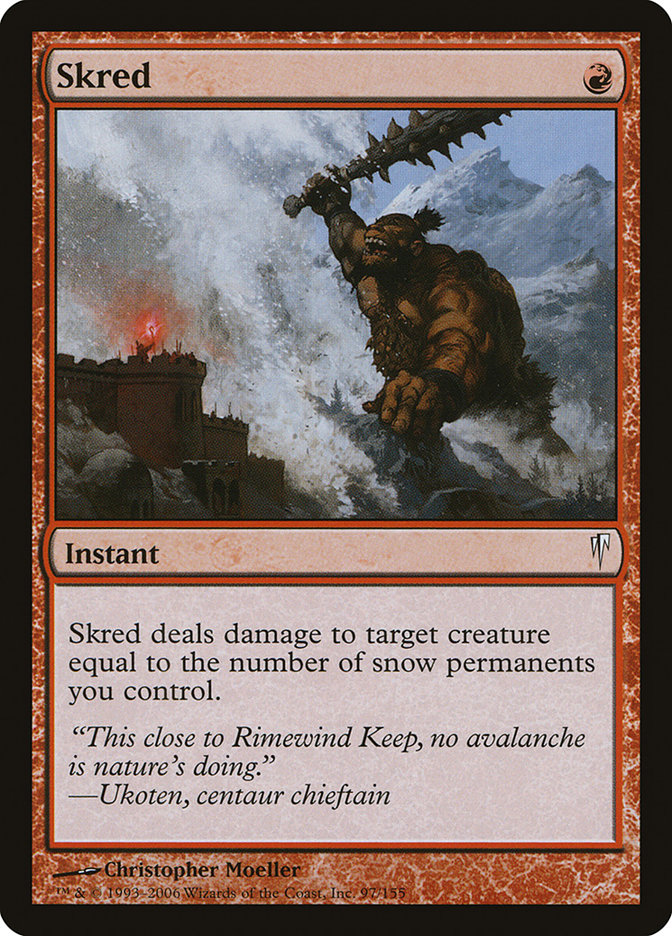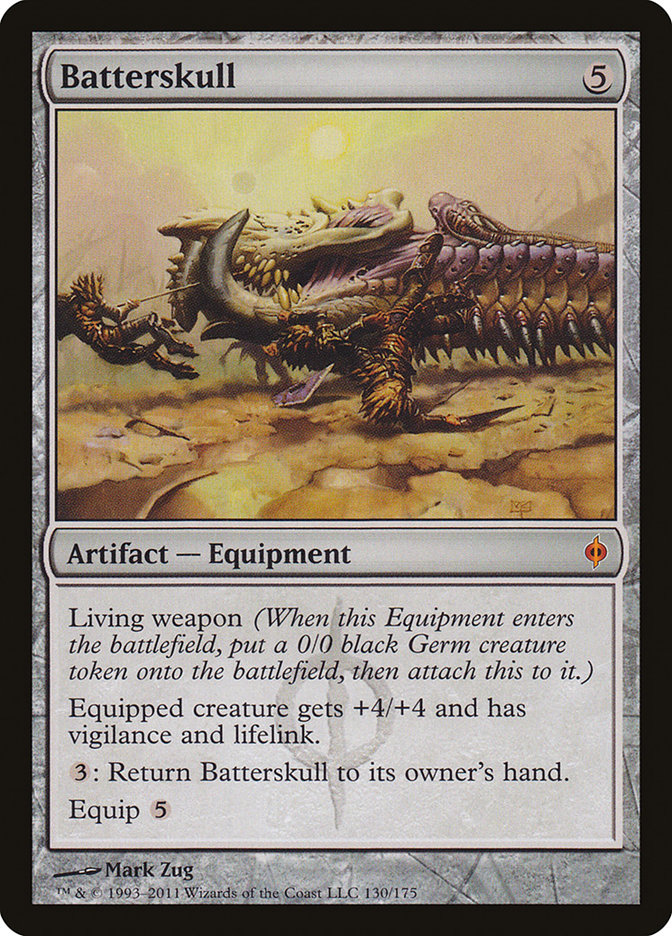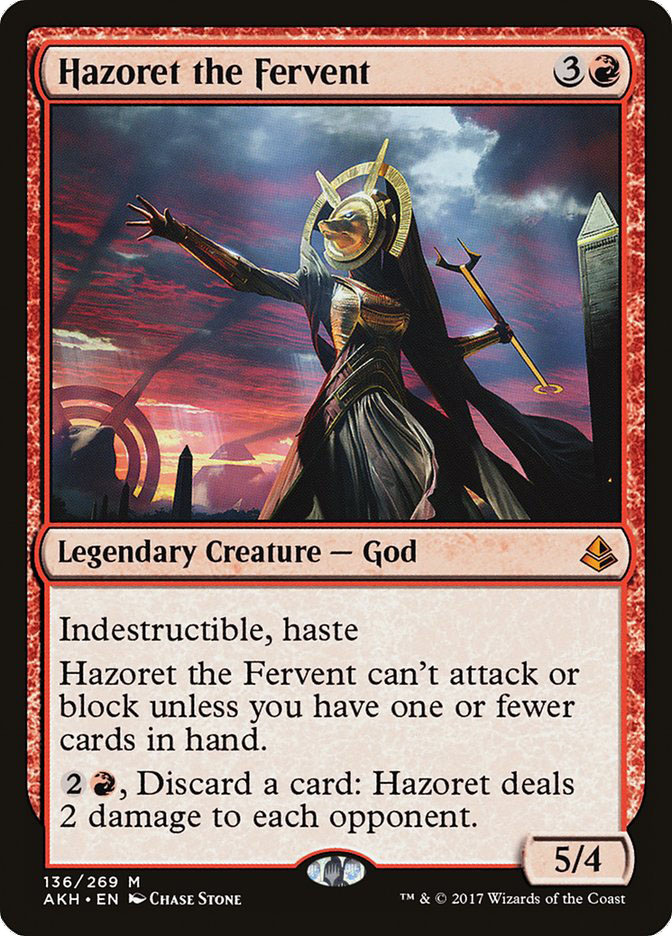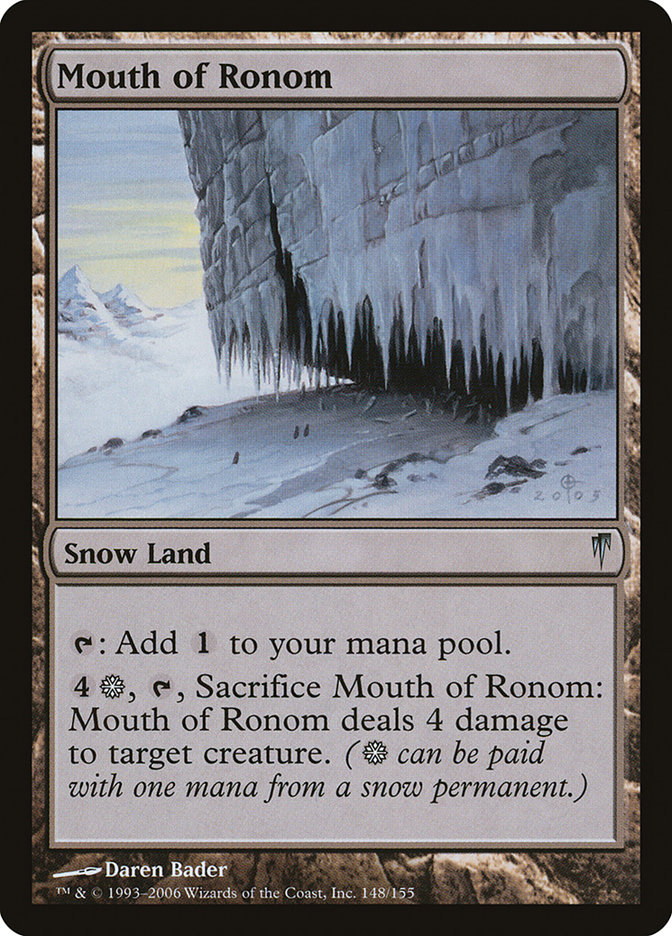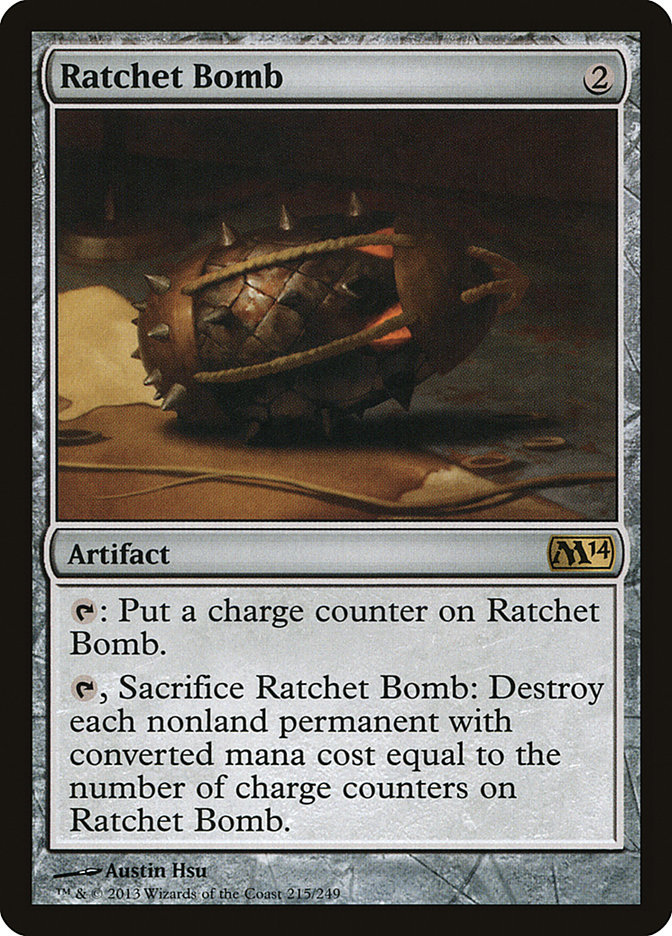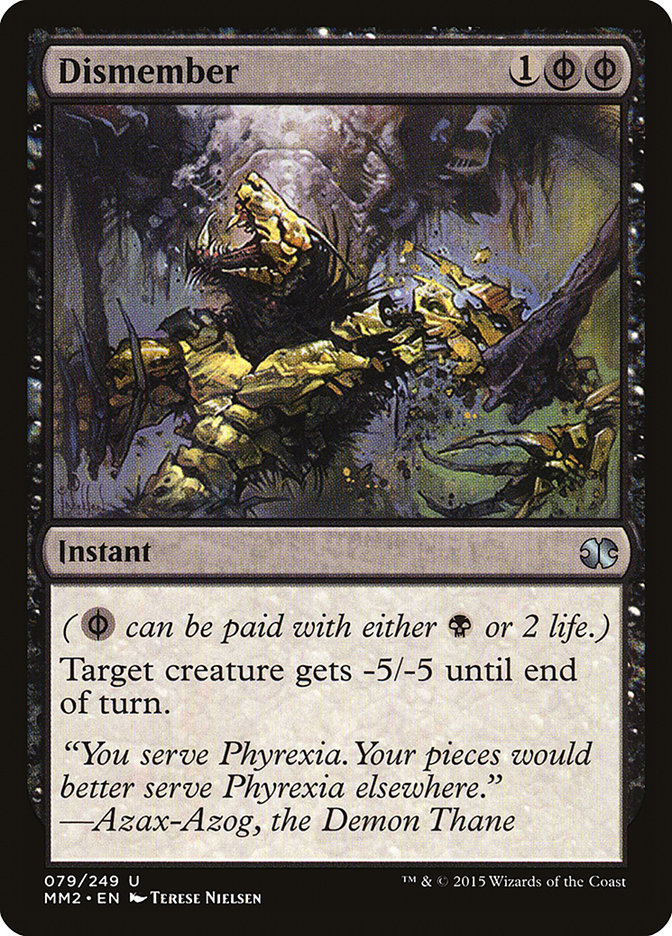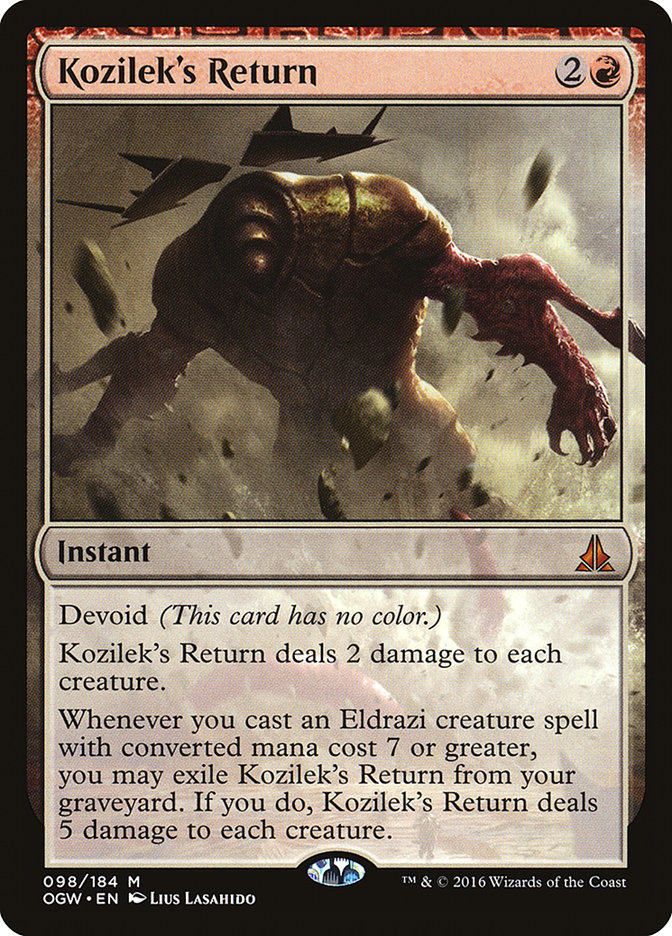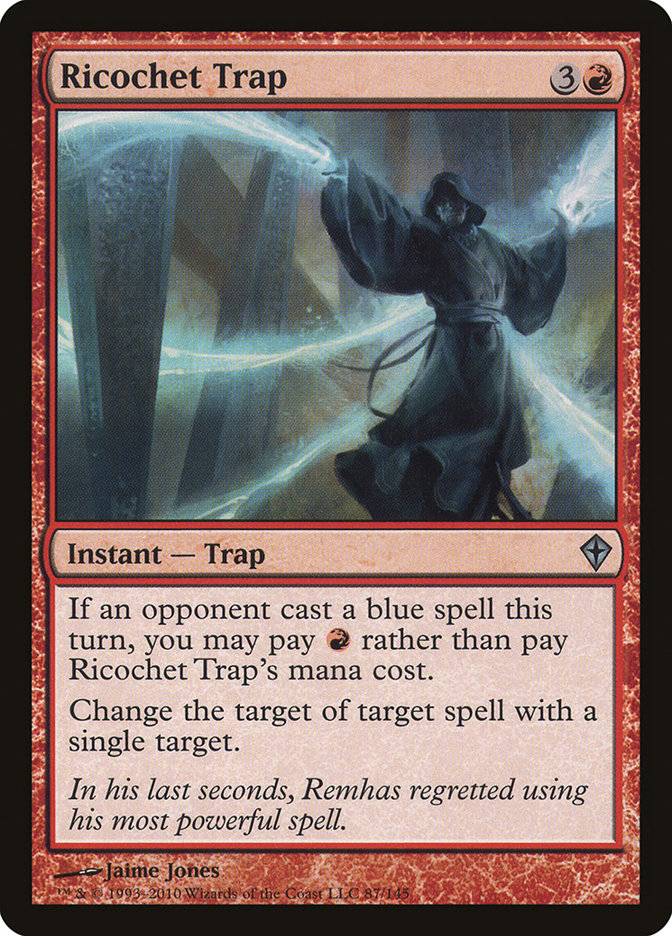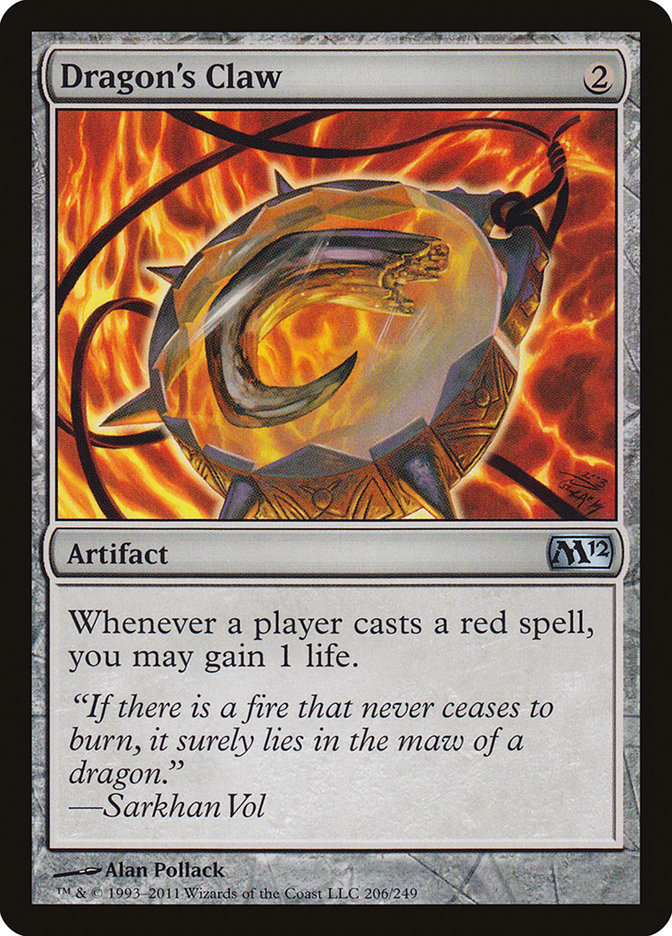“…In 8th place, with an opponent match win percentage of .6488, Trevor
May!”
Elated and still in disbelief, I gave my friend Ryan a huge fist pump and
high five. I had just finished in the Top 8 of an SCG Open with my favorite
Modern deck, Skred Red!
Creatures (9)
Planeswalkers (6)
Lands (22)
Spells (23)
- 4 Lightning Bolt
- 4 Blood Moon
- 4 Mind Stone
- 4 Skred
- 4 Relic of Progenitus
- 1 Ratchet Bomb
- 2 Anger of the Gods
Sideboard

For the many of you out there whom I have never met, my name is Trevor May.
I have been playing Magic since Dragons of Tarkir. I am a South
Florida native who now resides in Atlanta, GA. I am a longtime board gamer
(always up for playing Twilight Imperium, Race for the Galaxy, or El
Grande!) who was encouraged to give Magic a try a few years ago. I am a
software developer at Ultimate Software and enjoy being active whether it
is swimming, disc golf or basketball. I am also a recent Georgia Tech (To
Hell With Georgia!) grad who still enjoys tailgating and seeing the Yellow
Jackets swarm on football Saturdays as they challenge the rest of the ACC.
But enough about me. I want to tell you all about the resurgence of Big Red
decks in Modern and how you all can take the latest iteration of Skred Red
to your local game store, SCG Tour event, and Grand Prix and dominate the
current meta.
Why Play Skred Red?
For those of you who are not familiar with the deck, Skred Red is a “
Mono-Red control deck in Modern that takes advantage of the metagame
by playing hate cards like Blood Moon, Relic of Progenitus, and Anger of
the Gods.” The deck is derived from the extremely efficient one-mana
removal spell Skred. In our deck, it turns into “deal damage to target
creature equal to the number of lands you control” for only one red mana!
Let’s talk about the other winners in this archetype and how they work:
Blood Moon is well positioned in the current meta.
Let’s just take a quick survey of the effects of Blood Moon on popular
decks in Modern at the moment:
– Grixis Death Shadow: Cannot cast spells except for fetching up single
copies of basic Swamp and Island.
– Affinity: Shuts down Inkmoth Nexus and Blinkmoth Nexus.
– Humans: Cannot cast spells without Noble Hierarch or Aether Vial on the
battlefield.
– Tron: Duh.
– Jeskai Control: Need to have all three of their basic Islands to cast
Cryptic Command. Shuts down Celestial Colonnade.
– Burn: Lightning Helix, Boros Charm, and Destructive Revelry cannot be
cast.
The only popular decks right now in the meta that are not hampered
significantly by Blood Moon are Storm (varieties that do play fetchlands)
and the U/R Through the Breach decks.
Skred Red challenges the opponent’s ability to prioritize your threats.
In Modern, I believe it’s advantageous to play decks where the relevant
threats/answers in a matchup are not always obvious. So many matchups are
decided in the first four turns in Modern, and knowing which of your
opponent’s threats to discard, counter, or remove is extremely important.
Being more of a rogue deck, Skred Red has this advantage naturally.
However, unlike other lesser-known decks, Skred has the benefit that each
one of its threats can single-handedly win the game if it goes unchecked.
There have been many games where I have landed a Turn 3 Blood Moon into
Turn 4 Pia and Kiran Nalaar that subsequently went the distance as I
ensured each of their creatures were removed…assuming they could cast
them under the Blood Moon at all!
We have seen well-known, skilled players harness lesser-known decks at
their respective times in the meta to great success.
Todd Stevens birthing the entire G/W Company archetype to great success.
Collins Mullen going undefeated with Humans back at SCG Cincinnati.
Jonathan Rosum placing in the Top 8 of three separate SCG Opens with Jeskai
during the inception of that deck.
Modern is a format where you can do this.
Playing a deck that gets to switch between control and beatdown from
match to match.
If you are like me, you enjoy the challenge of decks that get to play that
hybrid role. Especially at long tournaments, I put an emphasis on decks
that I enjoy playing and find interesting from matchup to matchup. Skred
Red gets to play both roles, as occasionally, it is looking to slam as many
Stormbreath Dragons as possible and attack away to a quick victory. Other
times it would happily trade that Dragon for another Anger of the Gods to
permanently deal with these pesky Prized Amalgams.
Card Choices
I have been playing Skred for about ten months now and have been evolving
my list from the initial Kevin Mackie list that won GP Dallas-Fort Worth
back in November of 2016. I will focus on the primary differences between
our two lists.
Trading Batterskull for Hazoret the Fervent.
I have been playing with one copy of Hazoret the Fervent in the main since
GP Richmond last August and have not gone back. The life gain effect from
Batterskull is not as relevant in the current meta as the indestructible
nature of Hazoret. Once she resolves against Grixis Death Shadow, they
literally do not have a way of removing her. Additionally, her power
(literally, the “five”) matches up very well against Tasigur, the Golden
Fang, Death’s Shadow, Thought-Knot Seer, and Reality Smasher. Given the
plethora of Kolaghan’s Command running around in Death’s Shadow decks,
Batterskull is much more vulnerable. Hazoret also improves the mulligan
ability of this deck. I remember many six-card opening hands that have had
a few lands, removal spell, and Hazoret, and I immediately saw a path to
victory. Hand emptied in no time.
Embracing Mouth of Ronom.
Affectionately called the “Mouth from the South” by Cedric Phillips and
Patrick Sullivan on stream, this utility land was used multiple times over
the weekend in cases where I flooded heavily on lands and needed an answer
to my opponent’s threats. Being colorless, it also is useful for killing
Etched Champion, Kor Firewalker, Burrenton Forge-Tender, or the other
popular “protection from red” creatures that are running around in my
opponents’ 75 cards. Some question the card since you could draw both it
and Scrying Sheets in your opening hand (and be without a red mana
producing land), but I value the opportunity to kill those pesky creatures
I mentioned more.
The one Ratchet Bomb is better than a redundant Magma Jet.
I have been placing one Ratchet Bomb in my maindeck since SCG Richmond of
last year, and it has helped me escape from so many awkward scenarios when
the opponent has permanents that are otherwise very difficult to remove
with red. Here is a simple guide to how many counters you should place on
Ratchet Bomb for a few different decks you may face:
Eldrazi Tron – Zero.
Death’s Shadow – One.
Humans – One or two.
Jeskai – Three.
Traditional Tron – Three. (Play smart with Blood Moon here.)
Anger of the Gods and Blood Moon swaps.
I love me some Anger of the Gods, but Dredge is not nearly as prominent
right now as back when Kevin won the Grand Prix. In addition, we still have
four mainboard Relic of Progenitus to help in that fight. Instead, as I
mentioned in the opener, I saw how important Blood Moon was in every game I
played. I truly did want to draw it in every game that I could.
Drawing double copies is not ideal, but is good against discard-heavy
decks. Additionally, you can always discard it to Hazoret! Notably, I
believe this change makes us more vulnerable to two-color creature decks
that are less vulnerable to Blood Moon, such as G/W Company, Counters
Company, and Elves. I would consider adding a third Wrath to the main if
these surge in popularity.
Pyrite Spellbomb can’t compete with more Chandra, Torch of Defiance.
Simply put, Chandra has turned out to be an incredibly powerful
planeswalker, and this deck leverages each and every one of her four
abilities. Here are just a few ways we use the +1:
Power out Mind Stone.
Cast and crack a Relic of Progenitus.
Turn 4 Stormbreath Dragon with just two Mountains and a Mind Stone.
Snow-Covered Mountains from Coldsnap are just better.
The Dragon in the art is really Stormbreath Dragon foreshadowing his
incoming, epic entrance.
Sideboard Choices
Mackie’s list and mine are very similar except for a few, notable changes.
With the introduction of Grixis Death Shadow and Eldrazi Tron decks, there is
a bigger emphasis on four and five toughness removal that needs to be ready
sooner than we get to five lands for Skred. I especially like the play
pattern of Turn 2 Mind Stone, Death’s Shadow opponent casts a delve
creature on their turn, and then we are able to use the one mana from Mind
Stone plus four life’s worth of Phyrexian mana to kill their creature on
end of turn.
Kozilek’s Return is colorless. This is great.
Instant speed, colorless removal. In short, that is all you need to know
about this spell. It kills the pro-red creatures mentioned before that
opponents will sideboard in against us. Plus, it is very useful against
Affinity, Infect, Merfolk, and other decks that lean on creature-lands to
achieve victory as we can cast this spell on their turn.
One Ricochet Trap.
I predicted I would be the control player more than the beatdown this
weekend, thus de-emphasizing the need for this spell, and that turned out
to be the case. I also have found that I prefer to have more threats for
the blue mages to deal with over one of the “red counterspells.” Often,
Molten Rain plus Blood Moon is enough to have them stumble so you can force
through your threats.
Dragon’s Claw is fine.
I have found that the Burn matchup is quite favorable to us and therefore,
lessened the need for this artifact. I tend to lose the Burn matchup only
when I stumble on lands early and cannot kill their haste creatures or I
make crucial mistakes that cost me the game (more on this below!).
So going forward, how does the future look for Skred Red?
Skred traditionally suffers against “out of the hand” combo decks such as
U/R Through the Breach, Ad Nauseam, and Storm. I lost to the last of these in the
quarterfinals of the Top 8 to the talented Caleb Scherer. While Storm is
popular right now, I do believe it is the least-hard to win of those three
matchups given enough practice. As long as these kind of decks stay low in
representation compared to the creature-heavy, multi-color land decks, then
I believe Skred is a viable choice in upcoming tournaments. With its
fistful of Skred and Bolts, the “Red Jund’ deck greatly prefers to see a
Turn 1 Vault Skirge to a Sleight of Hand!
That being said, I still plan on playing Skred Red at upcoming local
tournaments and SCG Indianapolis next month. With Affinity, Humans, and
Burn still being the fun police on decks that need lots of setup time, I do
not see the combo control decks becoming overbearing. We all remember the
infamous Game 1 of Humans versus Storm at SCG Cincinnati:
If you see me at a future Magic event, please say hello. I enjoy meeting
other players! For those of you want who to know more about happenings in
the Skred community, I invite you to check out our subreddit. I plan on
writing a tournament report there soon. Before I go, I now leave you with
the official “Trevor May Skred Red Sideboard Guide”!
Skred Red Sideboard Guide
Grixis Death Shadow
Out:

In:

I believe this matchup is one with quite high variance in terms of how it
plays from game to game. I have personally experienced all of the following
scenarios:
Blood Moon them Turn 3 and they never cast another spell.
They cast Turn 2 delve creature and we can never remove it in time past
Stubborn Denial.
Eternal Scourge continually blocks Death’s Shadow and is exiled with Relic
of Progenitus until we are able to Skred the Death’s Shadow and win.
Lightning Bolt plus Pia and Kiran Nalaar opponent for the win.
Stormbreath Dragon eats a Terminate on the turn it is played.
Stormbreath Dragon deals damage multiple times for the win.
All that being said, I see us as the control deck in this matchup, trying
to stave off an early delve creature with Relic of Progenitus and then
burst through enough damage to kill them in a one or two turn sequence.
Unlike other matchups where you may continually tap the Relic of Progenitus
each turn and wait for the Snapcaster Mage before you crack it to exile all
graveyards, you cannot be greedy in this matchup. It is important
to activate the Relic on Turn 2 or 3 as to avoid them getting the delve
creature out before your Skred can deal five damage.
Esper Death’s Shadow
Out:

In:

This matchup differs because of Lingering Souls. They will attempt to play
more of a grindy game that stresses our one-for-one removal suite. Thus, I
like to leave in two sweepers but switch one to instant speed with
Kozilek’s Return.
Jeskai Geist
Out:

In:

Stormbreath Dragon is your most important creature here. Take notice of
their lands and do all that you can to resolve the Dragon to avoid it
getting countered. Once it is on the battlefield, the only single-card
response they may have is a Supreme Verdict out of the sideboard, but not
all lists even play that. Our targeted removal is not as important given
the existence of Geist of Saint Traft and that is why we leave in the two
Anger of the Gods. Also, if your opponent lands an early Geist and you do
not have Anger of the Gods or creatures to block, do not be afraid to Skred
the Angel to essentially “gain four life” as it can buy you the necessary
time to find your answers.
Jeskai Control
Out:

In:

The strategy is similar to the approach against Jeskai Geist, but you are
trying to end the game even sooner. Ideally you can land Pia and Kiran
Nalaar or Stormbreath Dragon and force out their Supreme Verdict. Once they
have tapped out, you can keep the pressure on with Koth or Chandra! Always
remember to check to see if they have triple blue to see if they can cast
Cryptic Command.
Burn
Out:

In:

Bringing in the Rabblemasters may seem a little unorthodox, but the Burn
player does not block very well at all, and Rabblemaster ends the game
quickly while you remove their creatures. Them choosing to use a burn spell
to kill the Rabblemaster is a win anyway as it otherwise would go to us
directly.
Do not sideboard out Blood Moon as it shuts them off of Helix, Boros Charm,
and Destructive Revelry. Instead of the second Rabblemaster, you could also
include the Ricochet Trap as a means of redirecting their own burn spells.
:D.
Do not be afraid to Skred your own creatures (especially Hazoret, as she
will not die) if you have a Dragon’s Claw out in response to their lethal
burn spells. Often the one life gain is all you need to survive for a turn
and win on your subsequent turn.
Humans
Out:

In:

Shattering Spree is for the Aether Vial. This should be a match we win
nearly every time but can be lost by not prioritizing their relevant
threats as I did on my feature match. That is to say, keep removal up for
Kitesail Freebooter and Meddling Mage. They rely on these disruptive
creatures to buy enough time to swarm attack you to death. Also, they often
have no way of killing your Stormbreath Dragon except through combat with a
giant Kitesail Freebooter. Once you have resolved Blood Moon, their only
options to get more creatures to the battlefield are Aether Vial, mana from
Noble Hierarch or the singular basic Plains. The long game really does
favor you so do not attack until you know you have sufficiently stabilized.
This matchup is one of the primary reasons I like the variety of Dismember,
Roast, and Kozilek’s Return in the sideboard; those alongside the mainboard
creature removal make it very difficult for them to lock all of your
options down with Meddling Mage.
Eldrazi Tron
Out:

In:

This matchup is either 50/50 or slightly favored to Eldrazi Tron. Their
lower curve means Blood Moon is not nearly as effective as classic Tron
decks. Remember: you are the beatdown in this matchup and a long grind does
not serve you well. Denying their mana and then sticking one of our threats
can singlehandedly win the game if unchecked. Be wary of when they get to
seven mana to cast All is Dust. If you already have control of the board,
do not overcommit so that when they tap out for the big spell, you can once
again keep the Skred Train rollin. After sideboard, do not be afraid to
Shattering Spree a Mind Stone as that is one of the few ways they can
produce colorless mana for their suite of Oath of the Gatewatch
monsters.
G/X Tron
Out:

In:

Like Eldrazi Tron, you are the beatdown. If you are on the play and have a
Blood Moon and Shattering Spree in your opening hand, look to save the
Shattering Spree for the Oblivion Stone instead of early Expedition Maps.
Often we can land the Moon but are unable to win the game before they land
the Oblivion Stone on Turn 3 or 4 and crack it on Turn 5. That equates to
the awkward spot of knowing that anything more that is committed to the
battlefield will die. Skred Red cries when they cast Ulamog, the Ceaseless
Hunger… we just can’t beat that. It is for that reason that I look to
destroy Sanctum of Ugin.
Storm
With fetchlands:
Out:

In:

Without fetchlands:
Out:

In:

For either variety, this is a difficult but not impossible matchup. I
believe this matchup can be very dependent on the skill level of the Storm
player. I have beaten many Storm players who did not know when to attempt
to go off and win, allowing me enough time to land a big threat.
Conversely, Caleb Scherer timed it perfectly when he could see I was low on
mana. It is very important to mulligan until you find a Relic of Progenitus
plus instant-speed removal. You need to kill the cost-reducing creatures on
sight and always keep a mana open in order to crack Relic of Progenitus in
response to the Storm player casting Past in Flames. I prefer to use Skred
instead of Bolts on cost-reducing creatures in case you need the Bbolts
later to reduce the clock on killing them by a turn.
Affinity
Out:

In:

This is a matchup that I believe heavily favors Skred as the skill of the
Skred player increases. That is, we have all the tools to deal with their
strategy but a slight mistake in what answers we use for their threats will
leave you staring at an Etched Champion wearing a large, powerful Cranial
Plating. Blood Moon is not bad in this matchup as it allows us to
focus our removal suite on their regular creatures without fear of the
Inkmoth and Blinkmoth Nexus lands finishing us off when we are
empty-handed. We lack mainboard removal to the Etched Champion other than
the Mouth of Ronom and blocking from Eternal Scourge and the Thopters from
Pia and Kiran Nalaar. By far though, their most difficult creature for us
to remove is the Arcbound Ravager. I recommend saving multiple removal
spells and focus them there. We would much prefer they stack all the
counters on an Ornithopter rather than risk an instant speed blowout during
the attack phase by moving them all to an unblocked creature with Cranial
Plating.
That about covers it! Good luck, and I hope more of you will join me in the
Skred Army!


